
1
Ganglionic Blocking Agents
1- Depolarizing Ganglionic Blocking Agents
Depolarizing blocking agents are actually ganglionic stimulants. Thus, for
nicotine, small doses give an action similar to that of the natural
neuroeffector ACh. Larger amounts of nicotine, however, bring about a
ganglionic block characterized initially by depolarization, followed by a
typical competitive antagonism.
To conduct nerve impulses, the cell must be able to carry out a polarization
and depolarization process, and if the depolarized condition is maintained
without repolarization, obviously no conduction occurs.
Chemicals that cause this type of ganglionic block are not of therapeutic
significance.
2- Nondepolarizing Competitive Ganglionic Blocking Agents
Compounds in the class of nondepolarizing competitive ganglionic blocking
agents possess the necessary affinity to attach to the nicotinic receptor sites
that are specific for ACh, but they lack the intrinsic activity necessary for
impulse transmission (i.e., they cannot effect depolarization of the cell).
Such blocking agents are “competitive” with ACh for the specific receptors
involved and that either the agonist or the antagonist, if present in sufficient
concentration can displace the other.
Drugs falling into this class are tetraethylammonium salts, hexamethonium,
and trimethaphan. Mecamylamine possesses a competitive component in its
action but is also noncompetitive, a socalled dual antagonist.
3- Nondepolarizing Noncompetitive Ganglionic Blocking Agents
They produce their effect not at the specific ACh receptor site but at some
point farther along the chain of events that is necessary for transmission of
the nerve impulse. When the block has been imposed, increasing the
concentration of ACh has no effect; thus, apparently, ACh does not act
competitively with the blocking agent at the same receptors.
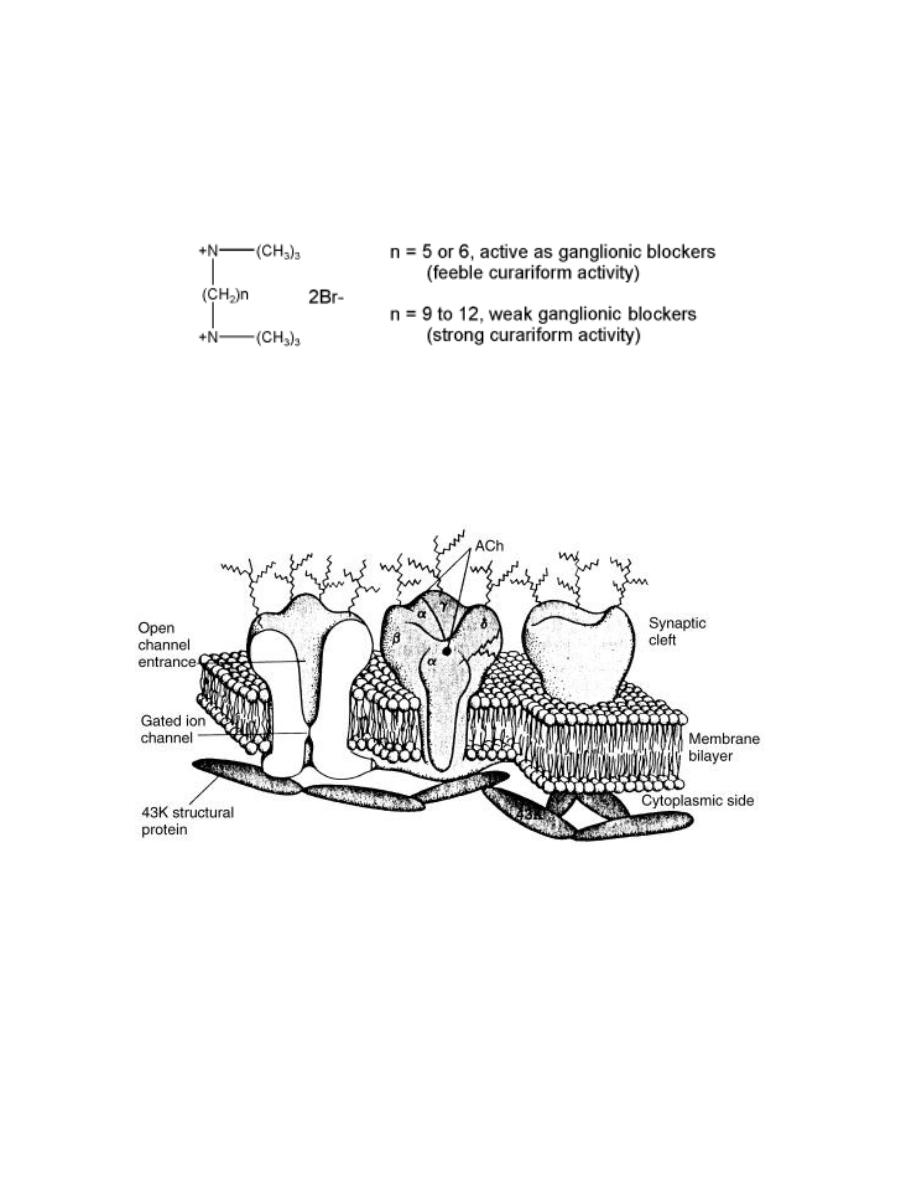
2
Theoretically, a pure noncompetitive blocker should have a high-specific
affinity for the noncompetitive receptors in the ganglia and a very low
affinity for other cholinergic synapses, together with no intrinsic activity.
There is a critical distance of about five to six carbon atoms between the
onium centers for good ganglionic blocking action.
The principal therapeutic application of the ganglionic blocking agent is the
treatment of hypertension through blockade of the sympathetic pathways.
Unfortunately, the action is nonspecific, and the parasympathetic ganglia,
unavoidably, are blocked simultaneously to a greater or lesser extent,
causing visual disturbances, dryness of the mouth, impotence, urinary
retention, and constipation.
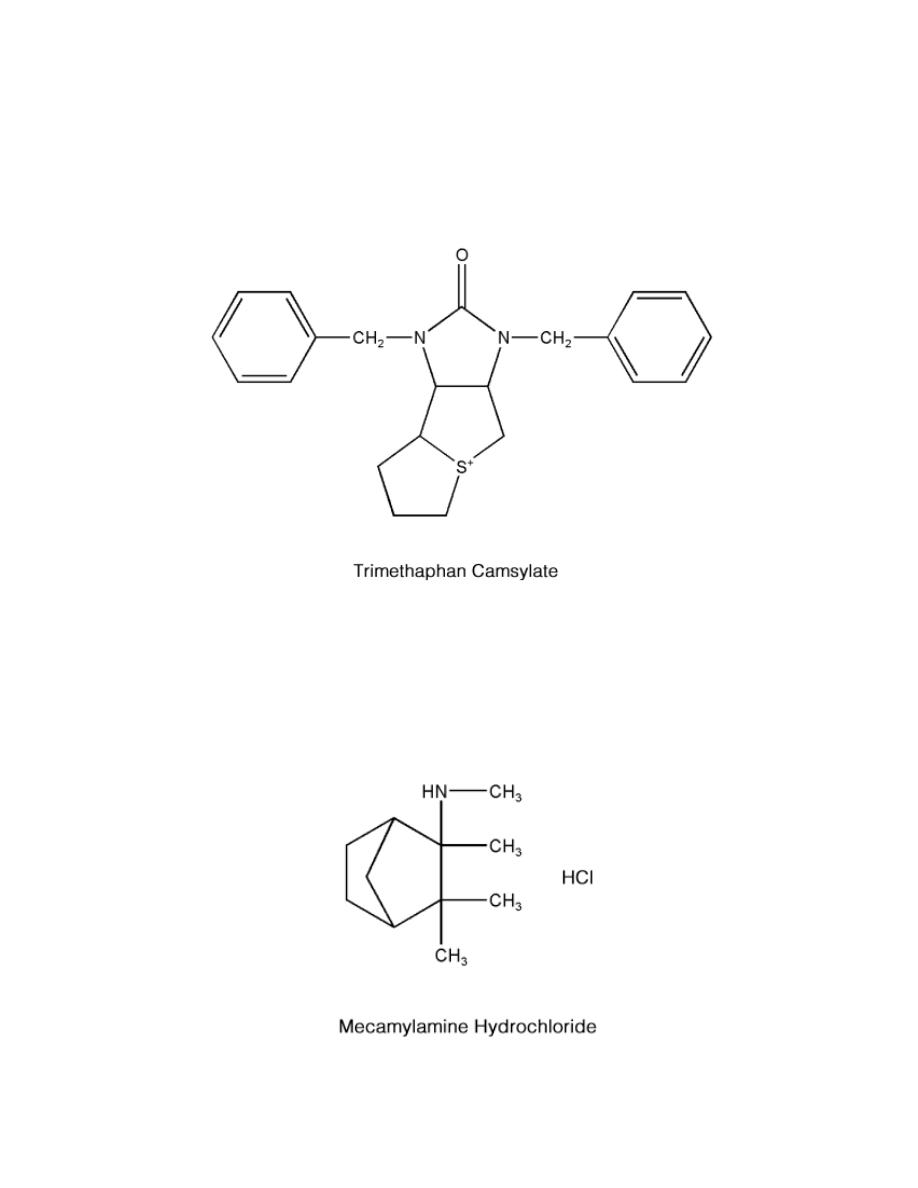
3
Trimethaphan
It is short acting ganglionic blocking agent, the action of the drug is direct
vasodilation. It is indicated in the treatment of hypertensive emergencies to
reduce blood pressure rapidly.
Mecamylamine Hydrochloride
This secondary amine has a powerful ganglionic blocking effect that is
almost identical to that of hexamethonium.It is absorbed readily and
smoothly from the GI tract.

4
NEUROMUSCULAR BLOCKING AGENTS
Agents that block the transmission of ACh at the motor end plate are called
neuromuscular blocking agents.
They are used as adjuvants in surgical anesthesia to obtain relaxation of
skeletal muscle. Also they are used in various orthopedic procedures, such as
alignment of fractures and correction of dislocations.
The useful compounds in this group sometimes are referred to as possessing
curariformor curarimimetic activity in reference to the original
representatives which were obtained from curare.
Although all of the compounds falling into this category, natural and
synthetic alike, bring about substantially the same end result (i.e., voluntary-
muscle relaxation), there are some significant differences in mechanisms.
1- Nondepolarizing Blocking Agents
These are drugs that compete with ACh for the recognition site on the
nicotinic receptor by preventing depolarization of the end plate by the
neurotransmitter.
This results in paralysis of neuromuscular transmission. The action of these
drugs is quite analogous to that of atropine at the muscarinic receptor sites of
ACh.
Drugs in this class are tubocurarine, dimethyltubocurarine, pancuronium,
and gallamine.
2- Depolarizing Blocking Agents
These drugs cause the depolarization of the membrane of the muscle end
plate. This depolarization is quite similar to that produced by ACh itself at
ganglia and neuromuscular junctions (i.e., its so-called nicotinic effect), with
the result that the drug, if in sufficient concentration, eventually will produce
a block.
It has been known that either smooth or voluntary muscle, when challenged
repeatedly with a depolarizing agent, eventually becomes insensitive.
Drugs falling in this class are decamethonium and succinylcholine.
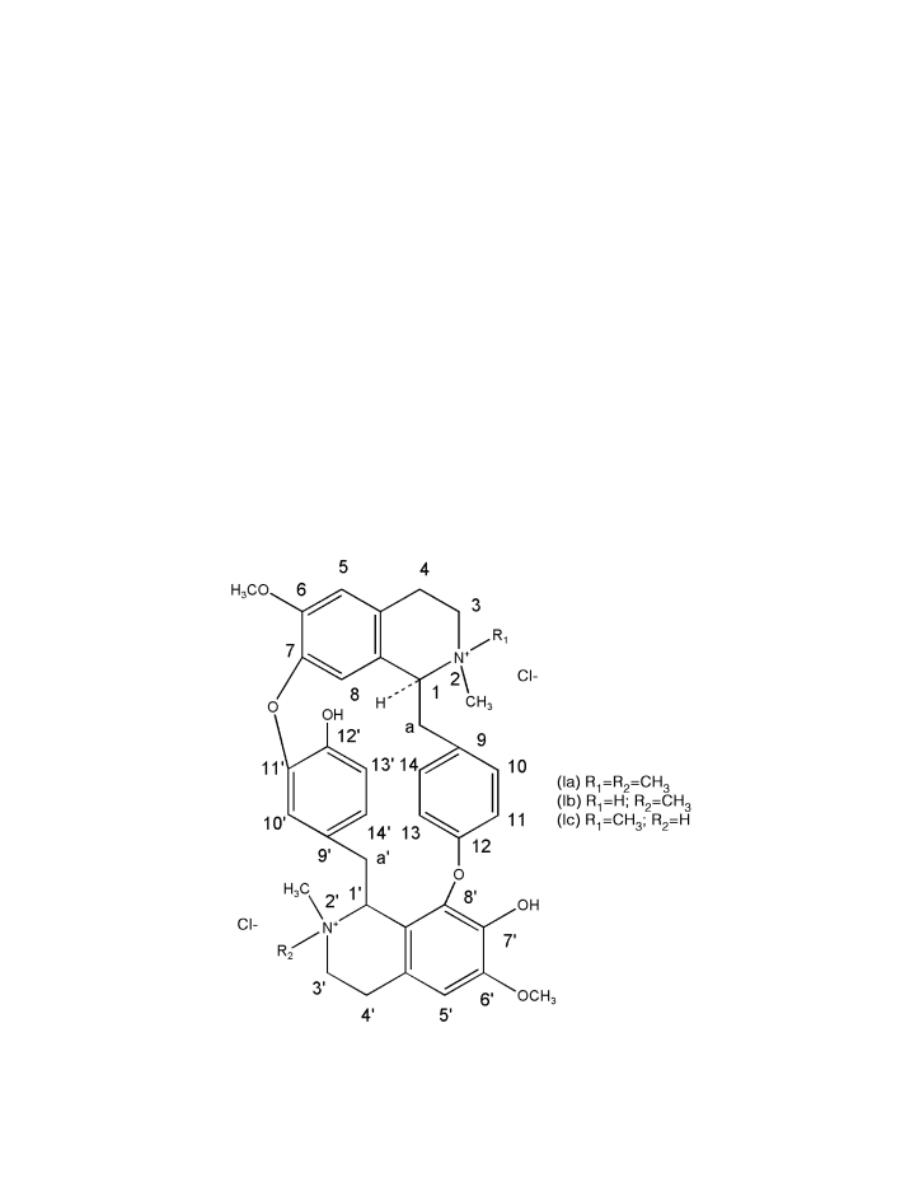
5
Curare and Curare Alkaloids
Curare was a term used to describe the very potent arrow poisons.
Tubocurarine Chloride, USP.
The structural formula for (+)-tubocurarine was long thought to be that of Ia
but it is now known to be that of Ib.
The diquaternary nature of the molecule provides better blocking action than
does a monoquaternary nature (e.g., Ib is approximately fourfold less potent
than dimethyl tubocurarine iodide).
Tubocurarine is a nondepolarizing blocking agent used for its paralyzing
action on voluntary muscles, the site of action being the neuromuscular
junction.
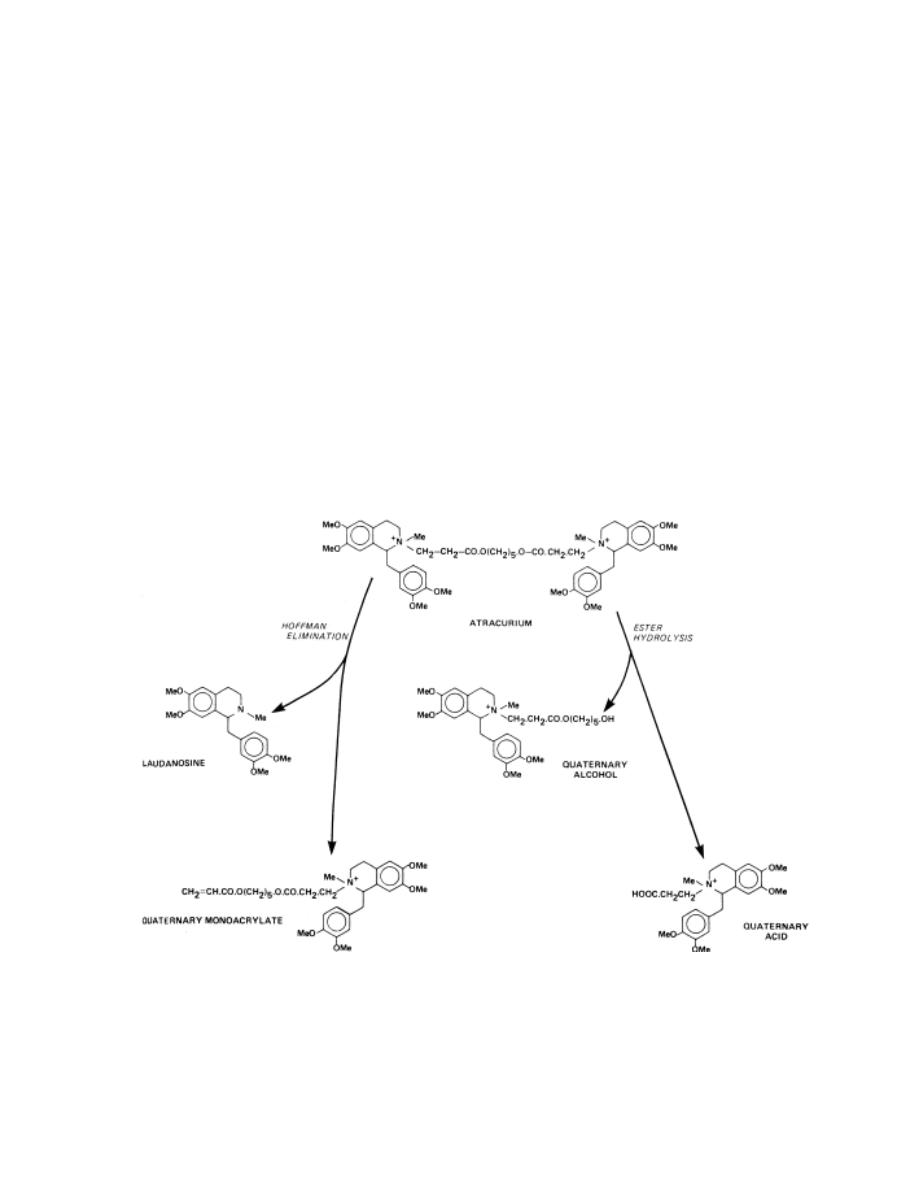
6
Its action is inhibited or reversed by the administration of AChE inhibitors,
such as neostigmine, or by edrophonium chloride.
Synthetic Compounds with Curariform Activity
Atracurium
It is a nondepolarizing neuromuscular blocking agent that is approximately
2.5 times more potent than d-tubocurarine.
The drug is metabolized rapidly and nonenzymatically to yield laudanosine
and a smaller quaternary compound which do not have neuromuscular
blocking activity.
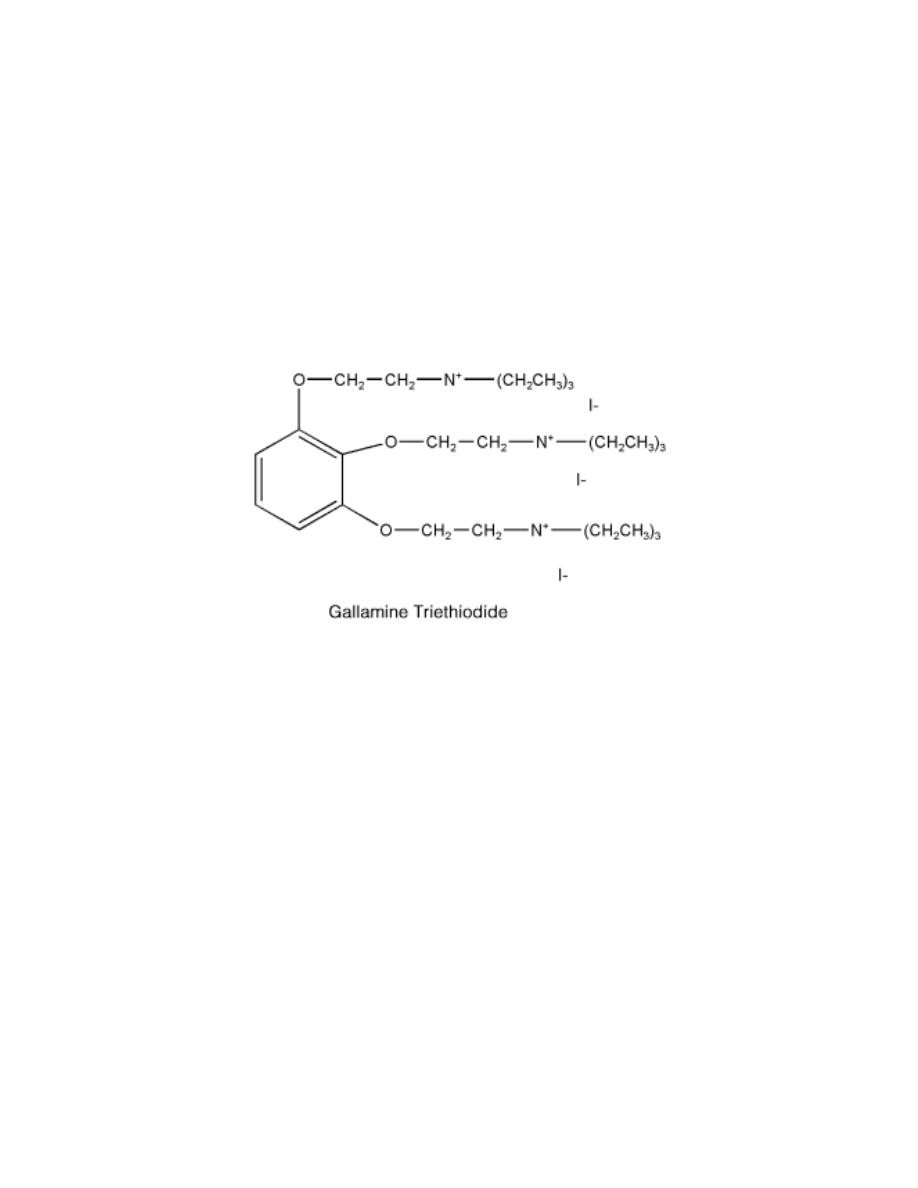
7
Atracurium besylate undergoes enzymatic decomposition of its ester
function to yield an inactive quaternary alcohol and quaternary acid.
AChE inhibitors such as neostigmine, edrophonium, and pyridostigmine
antagonize paralysis by atracurium besylate.
Gallamine Triethiodide, USP.
It is a skeletal muscle relaxant that works by blocking neuromuscular
transmission in a manner similar to that of d-tubocurarine (i.e., a
nondepolarizing blocking agent).
Gallamine triethiodide also has muscarinic antagonistic properties and binds
with greater affinity to the M
2
receptors than to the M
1
receptor, which may
be the cause of its strong vagolytic action.
Succinylcholine Chloride, USP.
Suxamethonium chloride
Succinylcholine chloride is characterized by a very short duration of action
and a quick recovery because of its rapid hydrolysis after injection.
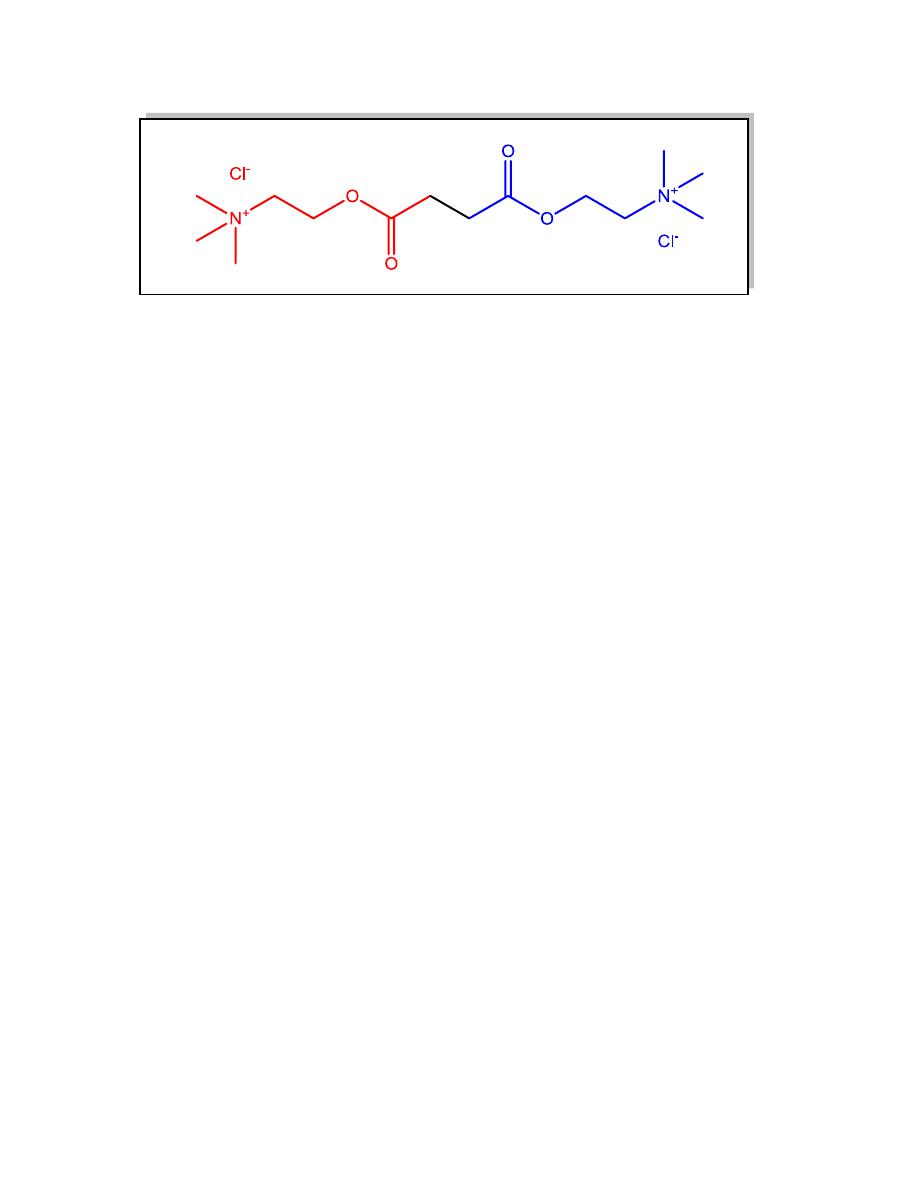
8
Its action is not antagonized by neostigmine, physostigmine, or
edrophonium chloride. These anticholinesterase drugs actually prolong the
action of
succinylcholine chloride, which suggests that the drug is probably
hydrolyzed by cholinesterases.
The brief duration of action of this curare-like agent is said to render an
antidote unnecessary.
